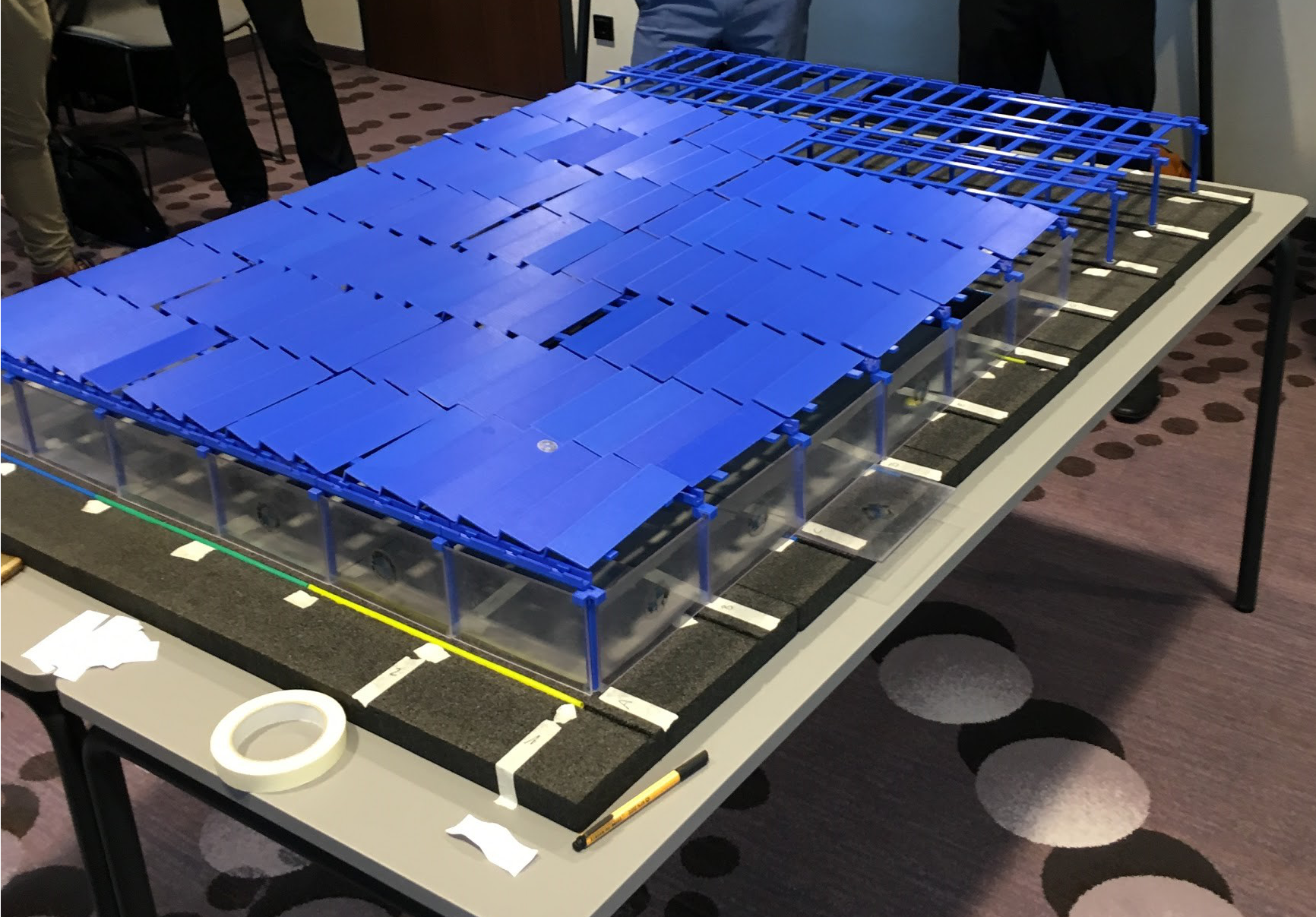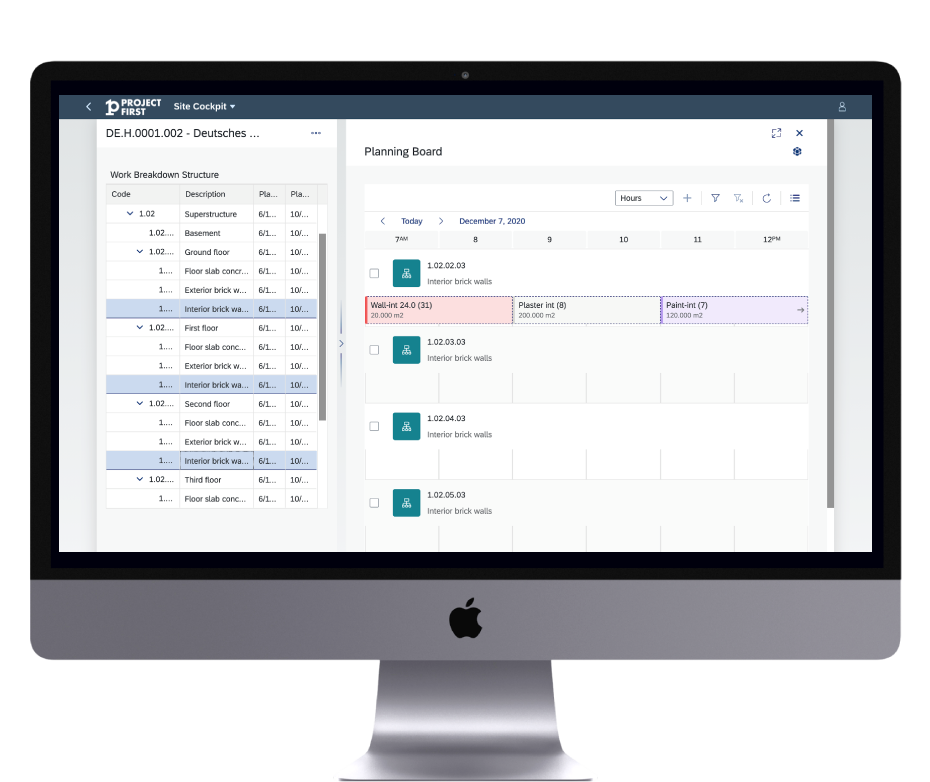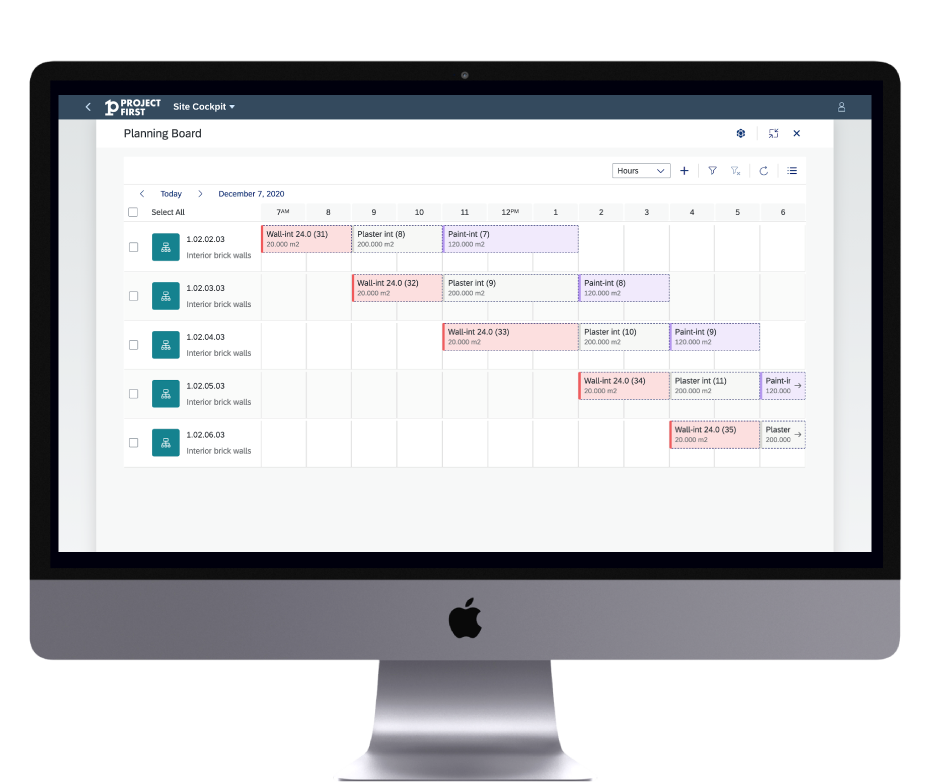Introduction
Takt (Time) Planning is a methodology to establish a flow of work and to reduce overall durations of repeated tasks. The German word “Takt” means “beat”. It is the duration after a crew moves to the next location to repeat their task.
Takt Planning was developed in the manufacturing (automotive) industry. But it can be applied in construction, too.
I visited a seminar for Takt Planning offered by the GLCI (German Lean Construction Institute). Using 3D printed toy parts we built a production hall (actually a BMW project in Brazil).
When we first built the hall without Takt Planning it took us the whole morning. After dividing it into areas and starting the next task after the shorter Takt we completed in a fraction of time.


